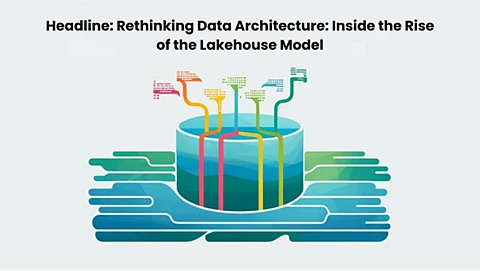

In a landscape where data lakes and warehouses have long been treated as distinct and often incompatible tools, the lakehouse architecture emerges as a bridge fusing the flexibility of one with the structure of the other. As explored by Venkata Surendra Reddy Appalapuram, this innovation answers the enterprise need for scalable storage, real-time access, and robust governance without the overhead of managing multiple systems. It introduces transactional integrity and metadata coherence into environments once notorious for inconsistency, paving the way for unified analytics and agile decision-making.
The lakehouse paradigm features a multi-layered architecture that separates storage, metadata, and computation while ensuring seamless integration. Using open table formats like Delta Lake and Apache Iceberg, it enables compatibility across tools and consistent data handling. This modular design supports platform evolution without sacrificing reliability, combining schema flexibility with enforced structure. As a result, organizations benefit from enhanced governance, interoperability, and adaptability making the lakehouse an ideal foundation for modern, scalable, and future-ready data ecosystems.
ACID (Atomicity, Consistency, Isolation, Durability) compliance, once limited to relational databases, has now been integrated into data lakes through the lakehouse model. By employing multi-version concurrency control and versioned metadata, lakehouses maintain data integrity during concurrent operations such as schema evolution, complex transformations, and historical data access. This advancement enables reliable transactional processing within flexible data environments, positioning the lakehouse as a powerful, unified solution for both operational tasks and advanced analytical workloads across modern enterprise ecosystems.
In lakehouse environments, metadata systems have evolved from basic catalogs into advanced semantic frameworks. Beyond managing schema and lineage, they now embed business logic, quality metrics, and policy rules. These systems offer both programmatic and declarative interfaces, transforming metadata into a strategic asset. They support automated data discovery, impact analysis, and adaptive governance, aligning with evolving usage patterns and compliance requirements. This evolution enhances consistency, transparency, and control across complex, dynamic enterprise data ecosystems.
Lakehouse implementations make data more accessible by supporting SQL-based queries across both structured and semi-structured formats. Tools like Presto, Trino, and Apache Spark SQL simplify complex data interactions, enabling analysts and developers to work with diverse datasets seamlessly. Additionally, natural language interfaces and visual exploration tools empower non-technical users to explore and analyze data easily. This democratization fosters broader participation in data-driven decision-making, reducing technical barriers and enhancing collaboration across various roles within an organization.
Automation is integral to lakehouse environments, with declarative pipelines handling both batch and streaming data. Features like dynamic schema detection, change tracking, and visual workflow design enable adaptive data ingestion and transformation. These capabilities create self-adjusting systems that minimize manual intervention while offering greater transparency and scalability. As workloads grow more complex, automation ensures consistent performance and efficient maintenance, making data operations more streamlined, responsive, and aligned with evolving organizational needs.
Lakehouses integrate real-time and batch processing in a unified infrastructure, addressing a critical limitation of legacy systems. By supporting continuous ingestion, change data capture, and materialized views, these platforms eliminate latency gaps and enable time-sensitive analytics without the need for specialized streaming architectures. This makes it possible to maintain sub-second to minute-level insights across diverse operational scenarios.
Modern lakehouse security frameworks operate at an unprecedented level of granularity, offering controls down to the column and cell. Encryption across all stages at rest, in transit, and even in use ensures compliance with stringent regulations. Meanwhile, audit trails and lineage data enable transparency and risk mitigation, making lakehouses suitable for even the most sensitive workloads.
The lakehouse model continues to evolve through serverless computing, edge integration, and AI-driven governance. Serverless platforms reduce infrastructure burdens while enhancing scalability. AI-based tools handle automated classification and policy enforcement, while metadata knowledge graphs unlock relationships and insights previously buried in disconnected systems. These innovations suggest a future where data environments are both adaptive and intelligent, operating with minimal intervention yet maximum contextual awareness.
In conclusion, By fusing the agility of lakes with the reliability of warehouses, the lakehouse architecture marks a pivotal step in the evolution of enterprise data strategy. Its ability to support operational rigor and analytical innovation within a single, coherent framework reshapes how organizations approach digital transformation.
In conclusion, this vision, as outlined by Venkata Surendra Reddy Appalapuram, showcases how strategic rethinking of architecture can unlock the full potential of organizational data while simplifying complexity for both users and systems.
